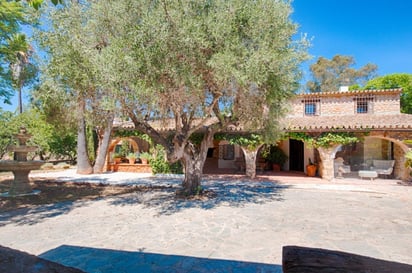The New Build Declaration (or Declaración de Obra Nueva) is an essential procedure in the real estate sector that allows the construction of a building or dwelling to be formalised in the Property Registry, putting everything in legal order. This process is important not only for the construction of new homes, but also for large, major renovations and/or extensions. In this article, we explain exactly what it entails, why you need it and when to apply for it.
What is a new build declaration?
The declaration of new construction (Declaración de Obra Nueva) is, simply put, a way of officially recording all changes to a piece of land. Whether you are building a new house or adding something below or above the ground to a property, the declaration ensures that these changes can be correctly registered in the Property Register. This makes it easier to arrange things later, such as selling or renting the property or taking out contracts for services like water or electricity.
When should you draw up the deed for new construction (or have it drawn up)?
Once you have the necessary permits and construction has really started, you can have the deed for a building under construction drawn up at the Land Registry.
Who draws up the deed?
The declaration of new construction is basically arranged by property developers or construction companies, especially if they build houses to sell or rent. But private landowners who build their own homes for personal use (a so-called ‘auto-promoter’) can also do this. This usually involves appointing a qualified architect to draw up the official declaration, which is needed for the notarial deed.
Types of new-build declarations
There are three main types of deeds of new construction:
1. Deed of ‘new build under construction’ (obra nueva en construcción)
-
- This deed is prepared for a building under construction. It is often needed when you apply for a mortgage. You need the building permit that gives you permission to build and a technical certificate confirming that the construction is in line with the permit.
2. Deed of ‘completed new build’ (obra nueva terminada)
-
- This deed applies to buildings that are finished and comply with all applicable regulations. It is needed to apply for utilities such as water and electricity. For this deed, you need several documents, such as:
- First Certificate of Habitability, which shows that the property is habitable.
- Certificate End of Construction, which confirms the completion of construction. This is prepared for a competent specialist (usually architect) and must be signed off by the College of Architects
- Energy efficiency certificate and other technical documents.
- Ten-year building insurance, to cover possible structural damage that may compromise the stability of the building (structure of the building).
- Building book (libro del edificio), a technical document in which all information is gathered about the structure.
- This deed applies to buildings that are finished and comply with all applicable regulations. It is needed to apply for utilities such as water and electricity. For this deed, you need several documents, such as:
3. Deed of ‘pre-existing new construction’ (obra nueva antigua).
-
- This is for property that is not yet, not complete or incorrectly registered in the Property Register. Consider the lack of the swimming pool or a garage. It is possible to correct this later through a technical certificate from a professional and a notarial deed describing the property and declaring its age. To do this, the so-called ‘prescription period’ must have expired (currently in the Comunidad Valenciana; 15 years) or - afterwards - a municipal building permit must be applied for the building in question.
Is the declaration of new construction mandatory?
Whether you are required to draw up the declaration of new construction depends on the situation. If you are building your own house for personal use, it is not strictly necessary, but it is recommended. The deed is needed to apply for utilities and can prevent problems later on.
When is the declaration of new construction really needed?
If you want to sell, rent out the building or apply for a mortgage, you must have this deed. Also, if you want to take out a mortgage for the construction as a developer, the declaration of new construction must be arranged.
What does the deed of new build cost?
The costs for the deed of new construction can vary quite a bit. They depend on several factors, such as the location of the property, the assessed value, the value of the construction and the notary firm you choose. The main cost items are:
-
- Stamp duty (tax on documented legal acts), in the Comunidad Valencian this is 1.5% of the value of the new construction.
- Notary fees, which depend on the notary office.
- Costs for registering the deed in the Property Register.

Conclusion
The declaration of new construction is an important legal procedure that ensures that the construction of a property is officially registered in the Spanish Property Register. Whether you are building a property for yourself, buying a property from a property developer or want to sell your own property that you know, for example, has had an extension done, it is essential to understand when and why you need this deed. By following the right steps, you can avoid legal problems and make the process of buying or selling, renting or applying for a loan go smoothly.
It is always good to prepare well and have the necessary documents in order! When in doubt, contact a professional who can assist you (legally) in handling the procedure.



